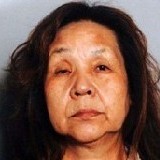
1948 - 2012
Miyoko Sumida
Summary
Name:
Miyoko SumidaNickname:
X / Ringleader of the Amagasaki Serial Murder IncidentYears Active:
1987 - 2011Birth:
October 12, 1948Status:
DeceasedClass:
Serial KillerVictims:
8Method:
Strangulation / StarvationDeath:
December 12, 2012Nationality:
Japan
1948 - 2012
Miyoko Sumida
Summary: Serial Killer
Name:
Miyoko SumidaNickname:
X / Ringleader of the Amagasaki Serial Murder IncidentStatus:
DeceasedVictims:
8Method:
Strangulation / StarvationNationality:
JapanBirth:
October 12, 1948Death:
December 12, 2012Years Active:
1987 - 2011bio
Miyoko Sumida was born in 1948 in Japan and lived a life that, from the outside, appeared relatively unremarkable. However, over the course of more than two decades, she quietly became the orchestrator of one of Japan’s most horrifying and bizarre serial murder cases. Sumida was not a traditional killer operating in isolation—she controlled others through manipulation, coercion, fear, and psychological domination, building a makeshift "family" composed of both blood relatives and people she trapped through abuse and blackmail.
She used her charisma and manipulation skills to create a web of control, targeting vulnerable individuals and inserting herself into their families. Victims often entered her orbit through marriage, adoption, or financial desperation. Once under her control, Sumida would force people to live together under one roof, restrict food and sleep, beat and humiliate them, and strip them of autonomy. She used intimidation and twisted loyalty rituals to enforce obedience, often pitting family members against each other in a dynamic eerily similar to cult abuse.
Her rise to control started with “family hijackings,” a phrase coined to describe how she inserted herself into and overtook other households. She created a pseudo-family through arranged or forced marriages and illegal adoptions. Her manipulation extended to financial control, frequently stealing victims’ pensions and insurance payments. Over time, the abuse escalated to violence and murder, concealed behind the closed doors of her domestic network.
murder story
The first signs of foul play linked to Miyoko Sumida emerged as early as 1987, when a woman known only as “Woman A” disappeared under suspicious circumstances. But it wasn't until November 2011—when a woman in her 40s escaped captivity and ran to the police—that Sumida’s web of abuse began to unravel. The woman revealed shocking details of beatings, starvation, forced confinement, and even killings that occurred within what investigators later described as a “family cult.”
Sumida and her long-time common-law partner, Masanori Sumida, were arrested for assault and other charges. What followed was a rapid cascade of revelations: bodies discovered in barrels, buried beneath floorboards, or dumped in coastal waters across multiple prefectures—Hyogo, Okayama, Kochi, Kagawa, Kyoto, Shiga, and others. At least eight people were confirmed dead, with three still missing. Victims included Sumida’s own son, her step-cousins, in-laws, and spouses of people she had forcibly absorbed into her network.
Sumida operated with military-like discipline, punishing disobedience with starvation, sleep deprivation, or violence. Victims were not only physically assaulted but were often coerced into participating in the torture or abuse of others. Some were forced to beat or confine their own family members. Children were neglected, and women were prostituted under her orders. Those who tried to escape were hunted down and brought back by loyal enforcers.
Her co-conspirators included a long list of relatives and manipulated victims—many of whom were arrested and later sentenced to long prison terms. Her sister-in-law, H, received 21 years in prison, and her common-law husband, I, received the same sentence for his involvement in the murders of multiple victims, including two of Sumida’s sons and a daughter-in-law.
The most notorious of the killings occurred between 2002 and 2011. Among the dead were the eldest and second sons of a hijacked family (Family A), a woman known as D and her eldest daughter, and an elderly woman, F, whose body was discovered in a barrel. Some of the murders were carried out in pursuit of insurance payouts, including a case where the body of a victim was dumped into the sea off Okayama Prefecture.
On December 12, 2012, Sumida was found dead in her cell, having hanged herself with a towel. Despite being on suicide watch, she had expressed her desire to die multiple times. Her death brought the investigation to a halt. While 17 people were arrested in connection to the case, and many stood trial, some victims’ bodies were never found, and key facts died with her. Her cremation was carried out in Kobe, with no family stepping forward to claim the remains.